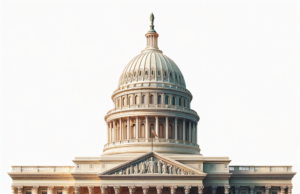Contents
- 1 Understanding the Firearm Excise Tax: An Overview of Its Purpose and Application
- 2 The Historical Context of the Firearm Excise Tax in the United States
- 3 How the Firearm Excise Tax Affects Gun Prices and Consumer Choices
- 4 The Revenue Generated by the Firearm Excise Tax: Where Does It Go?
- 5 Implications of the Firearm Excise Tax on Gun Manufacturers and Retailers
- 6 Future Considerations: Potential Changes to the Firearm Excise Tax Structure
In the complex landscape of gun ownership in the United States, the Firearm Excise Tax (FET) serves as a significant yet often overlooked financial element. While many gun owners focus on the purchase price of firearms and ammunition, the FET adds an additional layer of cost that can influence consumer behavior and the overall market. This article delves into the intricacies of the Firearm Excise Tax, exploring its purpose, historical context, economic implications, and potential future changes.
Understanding the Firearm Excise Tax: An Overview of Its Purpose and Application
The Firearm Excise Tax is a federal tax imposed on the sale of firearms and ammunition, designed to generate revenue for specific government programs while also serving regulatory purposes. Established under the Internal Revenue Code, the tax applies to manufacturers, producers, and importers of firearms and ammunition, who are required to pay a percentage of their sales to the federal government. The current rate is 10% for handguns and 11% for long guns and ammunition. The FET aims to promote responsible gun ownership and fund wildlife conservation efforts, thereby intertwining the interests of gun owners with broader environmental and public safety initiatives.
The Historical Context of the Firearm Excise Tax in the United States
The origins of the Firearm Excise Tax can be traced back to the 1919 Revenue Act, which introduced the tax as a means to fund World War I. Initially, the tax was temporary, but it was made permanent in 1937, reflecting the growing recognition of the need for regulation in the firearms industry. Over the decades, the FET has undergone various adjustments, including changes in tax rates and the introduction of new categories of taxable items. The historical evolution of the FET highlights the ongoing tension between gun rights advocacy and regulatory measures, illustrating how fiscal policies can shape the landscape of gun ownership in America.
How the Firearm Excise Tax Affects Gun Prices and Consumer Choices
The Firearm Excise Tax has a direct impact on the pricing of firearms and ammunition, ultimately influencing consumer choices. Manufacturers typically pass the cost of the tax onto consumers, resulting in higher retail prices. This added expense can deter potential buyers, particularly those in lower-income brackets, from purchasing firearms or ammunition. Additionally, the FET may lead consumers to consider alternative products or brands that may not be subject to the same tax burden. As a result, the FET not only affects the economics of gun ownership but also shapes consumer behavior and market dynamics within the firearms industry.
The Revenue Generated by the Firearm Excise Tax: Where Does It Go?
Revenue generated from the Firearm Excise Tax is allocated primarily to the Wildlife Restoration Fund, which supports conservation efforts and the restoration of wildlife habitats across the United States. This funding is crucial for maintaining ecosystems and promoting outdoor recreational activities, including hunting and shooting sports. The tax revenue also contributes to various federal and state programs aimed at enhancing public safety and promoting responsible gun ownership. By linking the FET to wildlife conservation, the government seeks to foster a sense of shared responsibility among gun owners and the broader community regarding environmental stewardship.
Implications of the Firearm Excise Tax on Gun Manufacturers and Retailers
For gun manufacturers and retailers, the Firearm Excise Tax presents both challenges and opportunities. Compliance with the tax regulations requires careful accounting and reporting, which can increase operational costs for businesses. Smaller manufacturers may find it particularly burdensome, potentially limiting their competitiveness in the market. Conversely, the FET can also serve as a marketing tool for companies that emphasize their contributions to wildlife conservation and public safety. By framing their products within the context of responsible gun ownership and environmental stewardship, manufacturers can appeal to consumers who prioritize these values.
Future Considerations: Potential Changes to the Firearm Excise Tax Structure
As discussions surrounding gun control and ownership continue to evolve, the future of the Firearm Excise Tax may be subject to scrutiny and potential reform. Advocates for gun rights may push for the repeal or reduction of the tax, arguing that it disproportionately affects law-abiding citizens and infringes upon Second Amendment rights. Conversely, proponents of stricter gun regulations may advocate for an increase in the tax rate as a means to fund additional public safety initiatives. As policymakers navigate these complex issues, the FET will likely remain a focal point in the broader debate over gun ownership, regulation, and public safety.
The Firearm Excise Tax is a multifaceted component of gun ownership in the United States, influencing everything from pricing and consumer behavior to wildlife conservation funding. As the landscape of firearms regulation continues to evolve, understanding the implications of the FET is essential for stakeholders across the spectrum, including consumers, manufacturers, and policymakers. By recognizing the hidden costs associated with gun ownership, stakeholders can engage in informed discussions about the future of firearms regulation and its impact on society.























